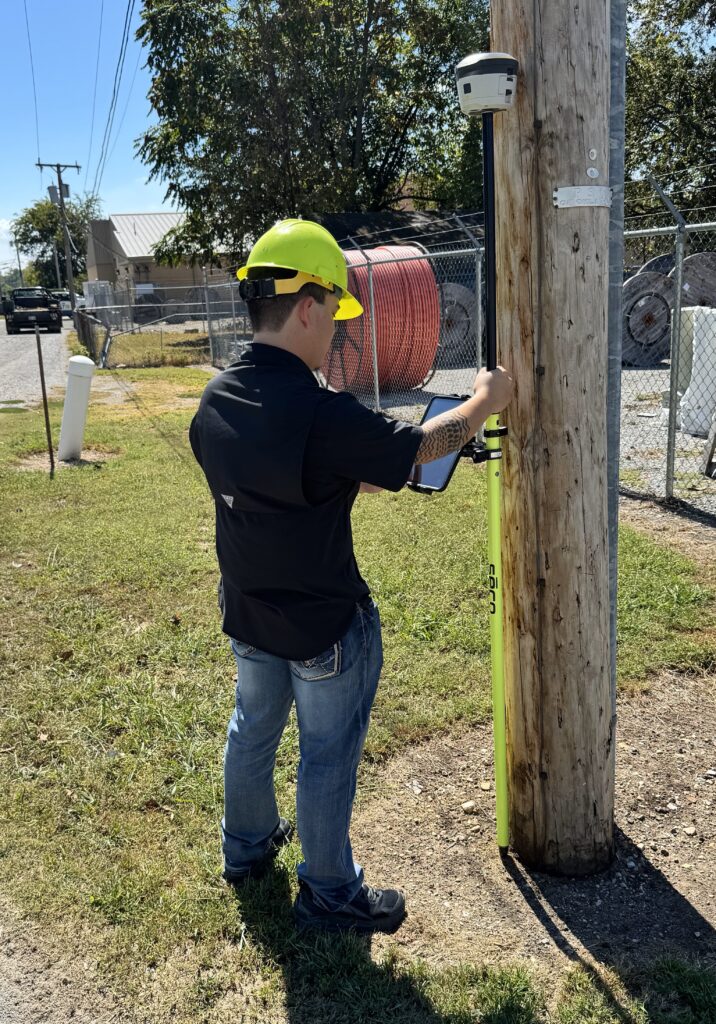Throughout my life I’ve always been fascinated by how innovation and technology can transform industries, sports, a person’s capabilities and lifestyle, and so much more. After 25 years in the in the telecom industry and a passion for helping people achieve their best each day, I love seeing new tech designed to help people succeed. Looking back at my career, there were many times my team and I were searching for new things to help us achieve our metrics. So today, I’m excited to highlight the amazing work being done by iSpeed Technology, LLC, an Esri Silver Partner, and their product QUIC–i. I believe they are delivering truly impactful resources for organizations.
With so many companies focused on trying to find innovative resources for their teams, QUIC-i seems to be well received by service providers in the telecom space. A great example is the work taking place at Salina Spavinaw Telephone (SST), an impressive small telecom company that serves rural areas of Oklahoma. With a territory spanning roughly 600 square miles, SST has successfully built fiber to over 90% of their area, and thanks to iSpeed’s QUIC-i solution combined with Esri technology, their operations have been smoother than ever.
What is QUIC-i, and How Does It Help?
Simply put, QUIC-i is Software as a Service (SaaS) designed for telecom providers, purposefully made to help improve operational efficiency. Think of it as a complete enterprise web app that integrates with Esri technology to offer mapping, asset management, and regulatory reporting in one platform. I believe that for companies like SST, which have traditionally relied on CAD-based systems, moving to this advanced system helps them gain the agility, scalability, and the fully customizable user experience they need.

Recently, I had the chance to chat with Scott Overland – Chief Technical Officer of iSpeed Technology, and he highlighted the importance and capability of customizing QUIC-i for each client’s unique needs. What I found impressive is that it’s not a one-size-fits-all solution. In fact, the team at SST played a significant role in the development and testing of apps like QUIC-Fiber within the platform. Since no two companies manage their networks the same, I think this kind of relationship and collaboration is a much needed and welcome sight.
The Shift from CAD to Esri-based Systems
Looking back at the transformation from legacy network management practices, SST’s shift from a CAD-based system to Esri-powered QUIC-i in 2022 was a pivotal moment for them. In my vast experience within the telecom industry, I know how challenging it can be to adopt new technology. The change is especially difficult for teams used to legacy systems and limited time available for any sort of migration. However, in talking with Scott, I liked how iSpeed seemed to make this transition a seamless one for all. One of the ways they made the move attractive to the teams involved, was by creating a feature layer with attachments of key screenshots from the old CAD system. It may sound simple, but this little detail helped SST staff buy into the new system by maintaining these legacy notes on their maps.

Throughout my various roles within the telecom industry, and now here in my role here at Esri, I’ve come to know that when introducing new technology or processes, getting team buy-in is a crucial part of change management. With much of our industry already working hard to meet their metrics, no one wants to be burdened with learning a complicated new system. But in this case, when you can bridge the capabilities and build awareness and desire within teams, it’s easier to bring everyone on board. In our recent conversation, Jerry Prather, Chief Operating Officer of SST, mentioned that this was one of the standout features during their transition, and it’s clear that productivity has increased significantly since moving to QUIC–i.
Boosting Productivity Across the Board
Here’s where things get exciting. In talking with Scott, I learn that SST has deployed QUIC–i company-wide, with 90% of employees having login capabilities. This is huge. To me it means everyone, from field technicians to office staff, can access the same data in real-time. Whether it’s designing networks, tracking assets, or handling regulatory reporting, the entire company is aligned and making decisions based on the same information. Having such an integrated system has truly streamlined their workflow.
As an example, Scott shared SST’s work in regulatory reporting. He shared how SST uses QUIC-i for all of its BDC and USAC HUBB reporting, which can easily be a headache for many telecom providers. With QUIC-i, the process is not only simplified the workflow but also aided in making it more accurate, reducing the margin for error. In a regulated industry like telecom, we all know that this level of precision isn’t just convenient, it’s necessary.
According to Scott, QUIC-i also serves SST in other critical business areas. For instance, they use it to create bid packages for construction projects, helping them ensure that all information is up-to-date and readily available. Additionally, the platform is an instrumental part of handling locate tickets, working seamlessly with other systems SST relies on like KorTerra via a REST share. This integration capability is one of the things Jerry Prather values most, as he noted in our conversation, “Esri allows us to collaborate with other companies and systems, and that keeps us moving forward.”
Collaboration and Integration with Other Vendors
I’d like to now call out one of the most powerful aspects of using Esri and QUIC-i together, it’s the ability to seamlessly integrate key operations and business support systems throughout an organization. I think SST’s work with KorTerra for management of locate tickets is just one example. They’ve also integrated Esri’s technology with Vivax Locators for real-time cable management and Trimble GPS for improved asset tracking. This is key for any organization working to mitigate expenses and maximize earnings.
Looking back at our conversation, I think Jerry Prather put it perfectly when he said, “Capture once, then you have the ability to use it over and over again.” It’s a straightforward concept, but one that has had a profound impact on SST’s overall efficiency. I love that they no longer need to input the same data multiple times across different systems. Most importantly, everything is streamlined and connected which is what teams are seeking in the tools they use.
Using GIS to Protect Field Workers
When I was a planning and design manager, there were many times my team and I worked to help our maintenance and fulfillment teams identify and report safety concerns. Whether it was a dangerous animal, network asset in a location difficult for traffic control, or troublesome backyard access, teams needed to know where issues were and to remove them when possible.
Now, let’s talk about an innovative use of Esri technology and QUIC-i that I find particularly compelling – geo-fencing. Scott shared how SST has set up geo-fences within their QUIC-i maps to warn their technicians of potential dangers in the field. From aggressive dogs to unsafe individuals, these alerts keep their team safe while they’re out doing installations or repairs.

This is yet another example of how GIS can be used beyond its traditional roles of mapping and asset management. In this case, it’s about the safety of team members. This kind of capability in GIS is one I see often overlooked in the day-to-day hustle of telecom operations. So, when you’re responsible for maintaining networks that span hundreds of square miles, keeping your team safe is critical. It’s the most important objective and goal.
The Future of Telecom Operations with Esri and iSpeed
In learning about SST’s experience from Scott and Jerry, it’s clear that combining Esri’s GIS capabilities with iSpeed’s QUIC-i platform is a big win for telecom service providers. From fiber management and regulatory reporting, to bid creation and field safety, I believe QUIC-i streamlines numerous workflows throughout service providers operations. I think the fact that it’s fully customizable means that other telecom providers, no matter their size or network scope, can benefit from this technology. One of the most exciting things about this collaboration is how it sets the stage for future advancements. The team at iSpeed continues to improve QUIC-i and will surely be adding features that make telecom operations even more efficient.
As CEO of SST Dalton Burchett said “QUIC-i has been a collaborative effort from the start. I can remember numerous meetings where I would ask Scott if some new feature or adjustment to the system was possible, his response was always “Yes, if you want it, we will build it.” This mindset continues today. iSpeed is a one stop shop for us. Anything to do with GIS we rely on them to help materialize our visions. We would not be where we are today without the functionality of QUIC-i and the forward thinking of iSpeed.” Ultimately, Esri’s robust platform allows for seamless integration with third-party systems, ensuring that telecom providers can continue to collaborate with the countless business and operations systems and vendors as needed.
Final Thoughts
The examples Scott shared shows us what’s possible when you pair the right technology with the right partner. As the telecom industry continues to evolve, companies like SST, with the help of Esri and iSpeed, will stay ahead of the curve. Whether you’re a small rural provider or a large-scale multinational corporation, the lessons from SST’s experience are invaluable. They are proof that collaboration, customization, and integration are the keys to success teams need.
Resources
Learn more about iSpeed’s partnership with Esri
Learn more about Esri in Telecommunications
Learn more about Salina Spavinaw Telephone



